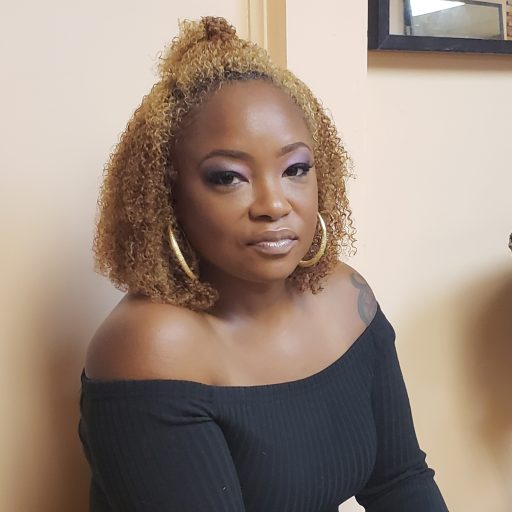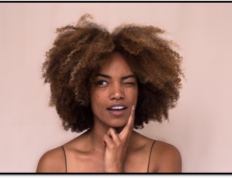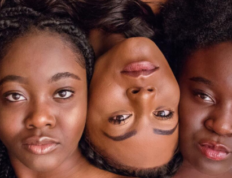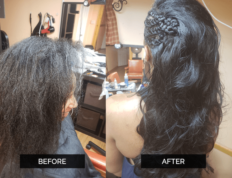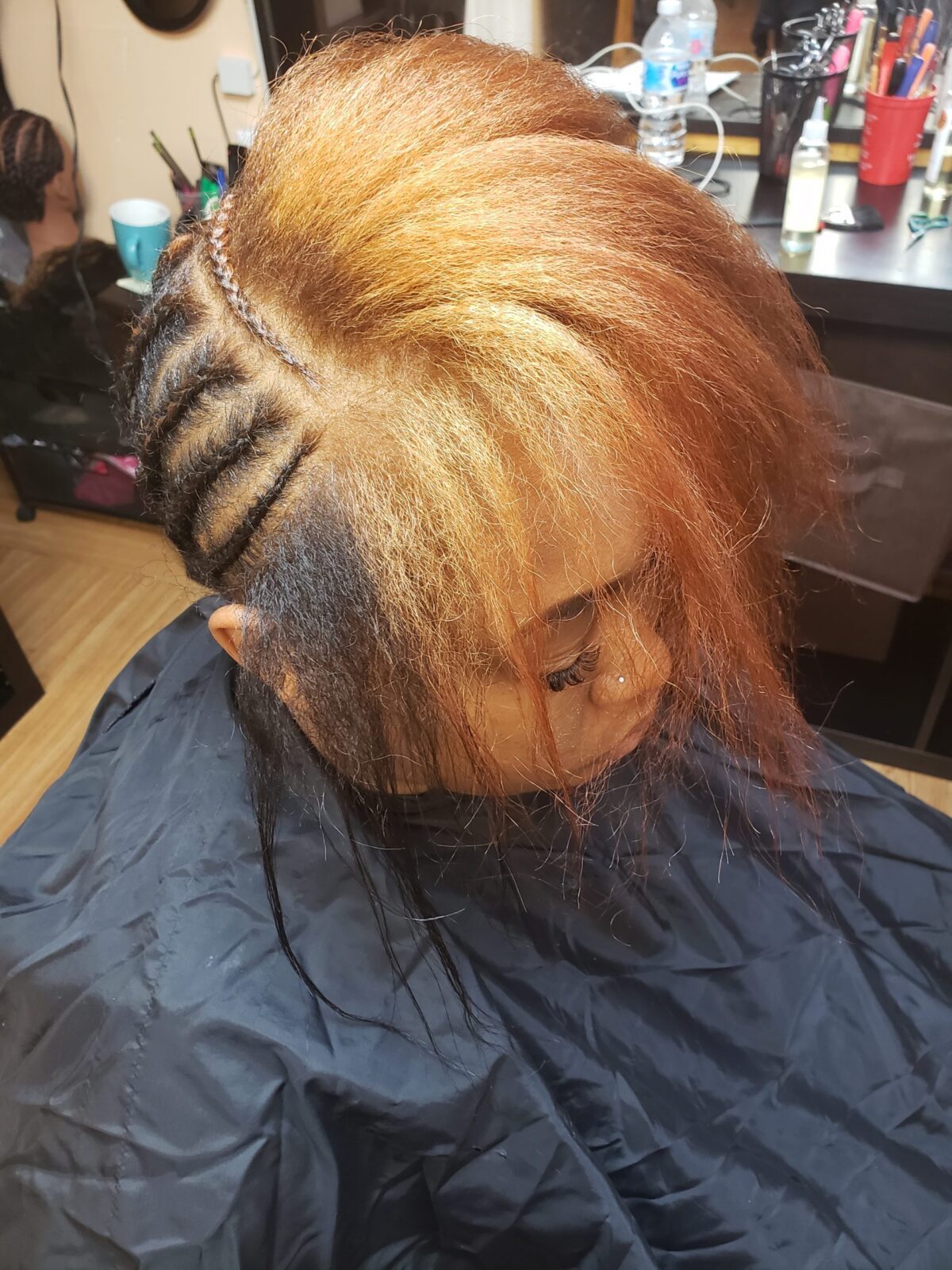
Are you a stylist or aspiring stylist who wants to learn how to lay a good weave foundation or want to slay flat weaves? Are you a stylist or aspiring stylist who is tired of lumpy, bumpy weaves, but you dont know how to achieve the flatness you desire to see? Lastly, are you a stylist or aspiring stylist who wants to learn the weave game but don’t know where to start? Before we get ahead of ourselves lets remember it all starts with a proper foundation!
The good news is you have come to the right blog post, and I can help! I have been a leading stylist in the DMV area for the past twenty-plus years, and I have been dominating the industry for my seamless flat weave sew-ins.
I have recently designed my first intro to weaving course, and I am starting with the basics and working my way up to pro.
I am committed to teaching you everything you need to know to take your craft to the next level and beyond. BUT, make no mistakes about it;
NO STYLE, NO QUALITY OF HAIR and NO SEWING TECHNIQUE
can replace the value and importance of a great weaver foundation, period!
Now that we have gotten that out of the way all you have to do is take that first step and sign up today, What Are You Waiting For?
HERE ARE A FEW BASICS THAT YOU SHOULD KNOW ABOUT THE BRAID FOUNDATION OF A WEAVE
“Without a solid foundation, you will have trouble creating anything of value.”
This is true with just about anything, and weaves are no different! I think most of us can relate to seeing weaves that look like foreign objects on people’s heads. Hopefully, you are not the stylist responsible! But even if you are, you don’t have to be anymore. The foundation of a traditional weave is made up of braids, more specifically, cornrows. Although weave foundations can be designed with many other techniques that do not include braiding, we are focusing on the basics in this course, which starts with traditional weaves.
WHAT ARE CORNROWS:
Cornrows are the foundation method used for all traditional weaving. Cornrows are also referred to as braids. There are two types of braids cornrows and singles or individuals. They both can be done to create a hairstyle, but only cornrows are used to create a weave foundation. For traditional weaves, the cornrows are done using three different weave methods:
- Rows
- Leave out
- Closing
The importance of the foundation, wither its rows or a full head, is crucial. In this course, I will explain all the misconceptions about braiding in general when it comes to weaves.
- Braids should not be tight.
- Tension should be even from start to finish.
- Synthetic hair should be minimal.
Contrary to popular belief, braiding in rows and braiding a full unit requires two different braid sizes. When braiding for rows, cornrows should be as small as possible but big enough to support the artificial hair that will be applied. Using the minimum amount of synthetic hair will help achieve the flattest results possible.
*the closer the braid is to the scalp the flatter the commercial hair will be to the scalp, helping to create a seamless install*
How tight is too tight?
When it comes to braiding for weaves there is a misconception that the tighter the braids, the better. That could not be further from the truth, making the cornrows too tight will do long term damage to the scalp that is often irreversible. Weaves are protective styles, and there is an excellent benefit to braiding the hair down, sewing in weave, and leave it to do what nature has intended. All hair does not fit into this category. Certain precautions need to be met for the weave to be protective of the natural hair and scalp. You should be able to gently pull the cornrows away from the scalp and be able to wiggle them without hurting the client. You should leave this much wiggle room to allow the reinforcement of the wefted hair to be sewn and allow for a firm foundation. Firm not tight.
How to ease up on the tension
While tension is essential, it is also dangerous. If you do not position yourself and your client in the center of where you are standing or working more than likely, there will be a certain amount of pulling on one side. Body position is vital to distribute an even amount of tension for your cornrows. I have worked with many stylists over the past twenty-plus years. I have seen this to be very common with most. Stylists have poor posture or their clients do while being serviced, and uneven tension is almost inevitable. Sometimes, it’s the stylist who may be afraid to tell the client to sit correctly or be the client who has poor posture or simply does not know. Posture and position may be one of those things you don’t realize is indicative of even tension.
If you have ever had braids or a weave that was too tight on one side or in specific places on your scalp, it is usually a result of uneven tension, and hair is pulled more in those areas. It takes time to figure out where your client’s head should be positioned, where you should be standing while servicing your client, and how to make sure you have an even tension distribution when braiding. The best place to start is at the center of your chair. Have your client upright and in the center as well.
Adding synthetic hair, less is better
When adding synthetic hair, you are creating the foundation for your weave. Each method (rows, leave out, or closing) requires a slightly different proportion of synthetic hair to natural hair. When applying synthetic hair, the strands of hair should be about as thick as the sections you are braiding. There are times when this rule does not apply.
*more details about the braid size in the course section for foundation*
Synthetic hair should be added into the braid as a filler. The purpose is to help with natural slipping that happens over time and after shampooing. Any moisture to the hair and scalp will cause loosening and slippage; however, adding too much synthetic hair will increase bulk and create unnecessary weight to the hair and scalp.
Synthetic hair should be stretched and almost equivalent to the length of natural hair length, so it thins and tappers at the end of each braid.
The foundation is an essential part of a weave. It is also the most minimized. In this course, you will learn how to apply this information in each step by step demonstration. So sign up today and begin your journey to weaving like a Pro!
